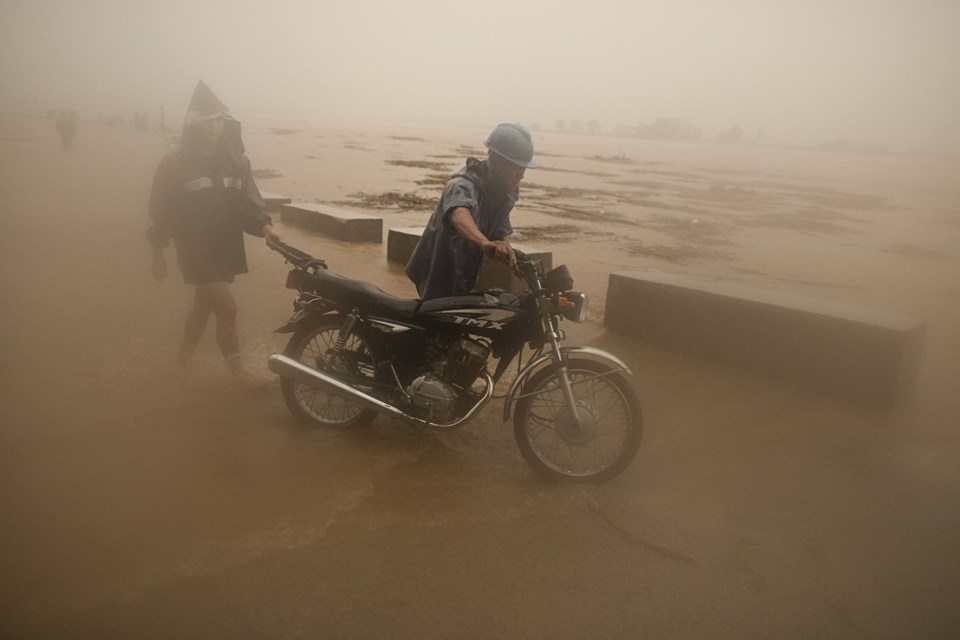MANILA, Philippines (AP) — unleashed floods, knocked down trees and caused power outages in the northern Philippines before weakening into a tropical storm and blowing out to the South China Sea, officials said Tuesday as they braced for another approaching storm.
The Philippines has scrambled to deal with multiple calamities wreaked by four and storms, including Toraji, that devastated the northern region of Luzon, including vast farmlands and communities, in less than a month. A brewing storm in the Pacific may strengthen into a typhoon and hit the country on Thursday, forecasters said.
There were no immediate reports of deaths from Toraji.
Authorities were still clearing roads blocked by fallen trees, electricity poles and small landslides set off by Toraji to allow the passage of food packs and other government aid and to rescue those who might be stranded in far-flung villages, officials said.
Disaster-response contingents, including army troops, police and the coast guard, have been struggling to respond to the aftermaths of the successive typhoons and storms, but President Ferdinand Marcos Jr. assured people Friday that help was on the way to communities battered by Toraji, locally called Nika.
"Even if there’s still stormy weather and strong wind out there, they say they can still do it. They can still work to clear trees that fell and the electric posts that were knocked down so our relief goods can pass through,” Marcos told reporters.
"We’re already there and they’re just waiting for the storm to allow them to get to work,” said Marcos, who skipped this week’s Asia-Pacific Economic forum in Peru to oversee his administration’s response to the aftermath of the storms.
In northern Cagayan province, where Marcos two days ago inspected damage from a previous typhoon and led the distribution of food packs to rural villagers, officials said Toraji’s fierce wind and torrential rains swamped 25 villages in six towns in floodwater. At least 22 bridges were impassable due to the floods and 13 towns and the provincial capital of Tuguegarao city reported power outages.
Before Toraji slammed into the northeastern province of Aurora on Monday, Interior Secretary Jonvic Remulla ordered the evacuation of people in 2,500 northern villages expected to be lashed by the typhoon and warned that the rain-soaked Luzon mountains, valleys and plains were more susceptible to flash floods and landslides.
Schools were shut and inter-island ferry services and domestic flights were suspended in provinces in or near the path of Toraji, the 14th weather disturbance to lash the Philippine archipelago this year.
The last two typhoons and a tropical storm before Toraji caused more than 160 deaths, damaged thousands of houses and farmlands and affected more than 9 million people, including hundreds of thousands who fled to emergency shelters. Toraji dumped one to two months’ worth of rain in just 24 hours in some places.
Overwhelmed, the Philippines received help from the United States, its longtime treaty ally, and from Southeast Asian countries, including Singapore, Malaysia, Indonesia and Brunei, to transport food, water and other aid to hard-hit northern provinces.
The Philippines is battered by about 20 typhoons and storms each year. It’s often hit by earthquakes and has more than a dozen active volcanoes, making it one of the world’s most disaster-prone countries.
In 2013, , one of the strongest recorded tropical cyclones, left more than 7,300 people dead or missing, flattened entire villages and caused ships to run aground and smash into houses in the central Philippines.
Jim Gomez, The Associated Press




